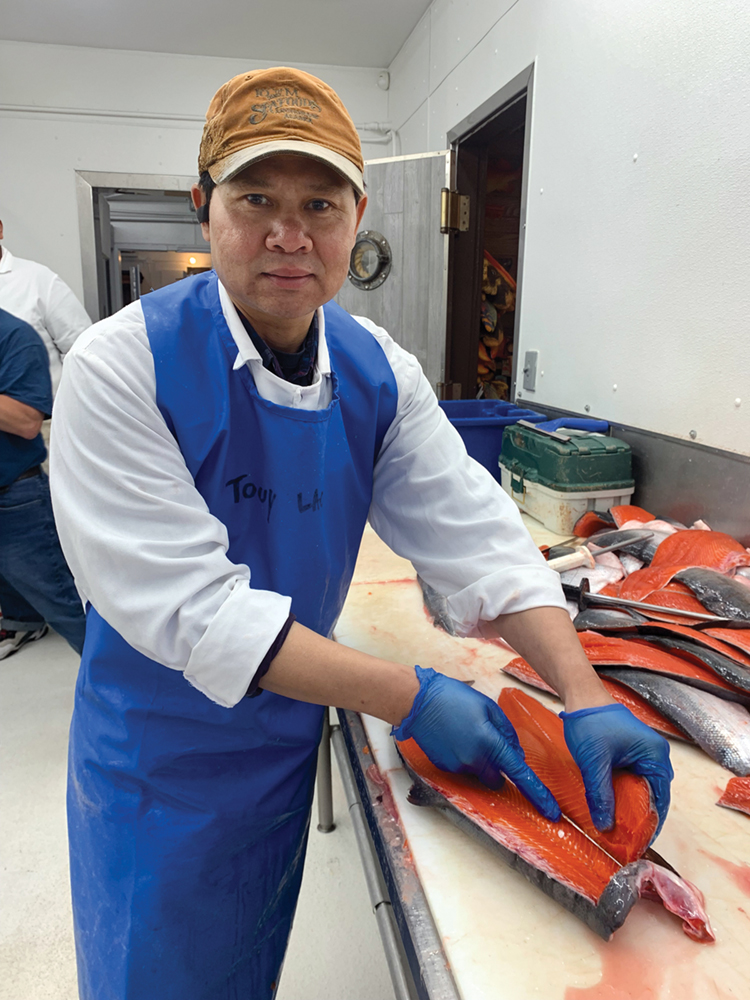
With commercial fisheries underway and a forecast of a record sockeye salmon harvest of 74 million fish, harvesters had already delivered over three million salmon by mid-June as hundreds of fishermen and processor workers headed west to Bristol Bay to await the anticipated red salmon surge.
Of the 3.3 million salmon listed in the Alaska Department of Fish and Game’s 2022 Preliminary Alaska Commercial Salmon Harvest blue sheet report more than 2.4 million of them were from the state’s western region, including 1.8 million sockeyes, 386,000 pink, 182,000 chum and about 1,000 each of Chinook and coho salmon, the bulk of them from the Alaska Peninsula. Kodiak area fisheries were also starting up, with some 218,000 salmon, including 169,000 sockeyes and 42,000 chum salmon delivered to processors.
Prince William Sound, including the famed Copper River drift gillnet fishery, had gotten off to a slow start in mid-May, with much ice still on the rivers, but as the weather warmed, the commercial fishery there had brought in an estimated 312,882 salmon, including 294,756 sockeyes, 10,058 Chinooks, 8,063 chums, 3,000 coho and 2,000 humpies in seven openers.
Pike Place Fish Market in Seattle was warning shoppers to call for the availability of the prized Copper River Chinook salmon, which were selling at $499.99 for a whole king by mid-June, down by 50% from the price those Chinooks commanded after the first opener in mid-May. Pike Place also had fillets of fresh Copper River kings for $69.98 a pound and Copper River sockeyes for $29.99 a pound, again down considerably in price from the week the fishery opened.
Retail availability of Copper River sockeyes was slim by June 17. 10th & M Seafoods in Anchorage said they had some coming from the district’s eighth opener, at $13.95 a pound, but supermarkets were already switching to lower priced fresh wild Alaska sockeye from other areas of the state.
“While salmon harvest totals are below year-to-date figures, volumes are usually so low at this stage of the season that it is much too early to draw any conclusions about the overall strength of runs,” said Sam Friedman, a research analyst with McKinley Research Group LLC in Anchorage, who produces weekly reports during the salmon season on behalf of the Alaska Seafood Marketing Institute,
Friedman noted that the harvest to date in Prince William Sound, mostly from the Copper River district, was up dramatically from the year-to-date harvests from 2020 and 2021, but still below the five-year average. “The seafood trade press reports higher volumes of Copper River sockeye this year is contributing to declines in prices from particularly high values reported before the season,” Friedman said. “Fishing has been slower this year in the southern Alaska Peninsula, a region that has been an early-season hotspot in recent years.”
